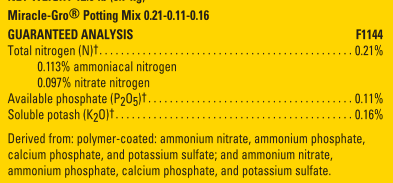Is there a good interval for changing snake bedding? I was thinking every 4 months but is that too short? I clean out their poop whenever they poop. I just don’t want to be spending a lot of money changing their bedding more than I should be.
I mean, I do a complete substrate once a month. I think that others do the same. I think the most important thing is just make sure that you sanitize and disinfect your enclosures.
I change substrate with my ball pythons in a rack once a month. Except in the winter I will extend that some due to most animals will skip meals during that time and bowel movements are fewer. On average once a month to every other month for them. Keep in mind when I spot clean between complete cleans I remove all bedding soiled and all surrounding bedding. Then I sanitize that spot and put clean substrate down. Clean all furniture soiled in enclosure as well between full cleans. I think this allows me to go longer between complete cleans and everyone that comes over is blown away that I have no animal smell in my home with the number of reptiles I have. My larger pvc enclosures that have rat snakes are once every 2 months. Same with those I spot clean and sanitize enclosure/furniture between cleanings. Then replace all soiled substrate and surrounding substrate with clean.
I bet you’ll find different answers ranging fairly widely. In racks I change out bedding when it looks like it needs it. Paper obviously per mess. Aspen fairly frequently, coco coir, less often, cypress, even less often. In big enclosures with animals that aren’t fed frequently it could be I’ll need to replace the bedding within a month, or could go 6 months.
Depends on the species, the substrate, and the setup. I spot clean when I feed, but I only do a full substrate change like a couple times a year. That’s with keeping corns on aspen. Mine usually only poop once, sometimes twice, per feeding and it’s easy to clean. I know some species are messier though!
My change out method is all over the place because I have all different breeds of snakes with different types of substrates so I don’t have a set system. It’s kind of like @randall_turner_jr said, you get a lot of different answers to your question……![]()
I use Miracle-gro potting mix and dont really ever have to change it out, even if I dont spot clean. Its great for most all herps - frogs, snakes, lizards, etc. Just have to manage the moisture and the natural bacteria will do the rest.
I hope your miracle grow potting mix is ONLY natural soil with no fertilizer, which can be very harmful to any herp.
I wouldn’t say this is a product great for most herps, especially not amphibians as they are sensitive to ammonium nitrate. This is the added fertilizer content:

This product has not been tested for use as a herp substrate, Miracle-Gro themselves would not suggest you use it, either.
My own personal substrate schedule is just spot clean as necessary, then do a full deep clean every month or two for all of my animals on Aspen. I go by appearance/smell, you can tell if you’ve got urates collecting. I keep my breeding females on white rags (essentially sturdier paper towel) so I swap those out and sanitize every soiling.
Edited to add: If you have a Tractor Supply, FleetFarm, or other place nearby and you bed with Aspen, check to see if they have Aspen horse bedding. Under $6.50 where I’m at for 7cu. ft./198L.
It’s perfect for almost all herps, including frogs, roads and salamanders. It has perfect water retention and water wicking qualities, unlike coco waste products and many of the other bioactive offerings.
^^^
These are absolutely correct and vitally important
That said, there are some very few MiracleGro products that are offered without the additives and those might be functional. However I have only ever used them when I am absolutely desperate and cannot find anything else
My base mix for all cages is equal parts by volume high quality leaf litter mulch/coir peat/hardwood pellets. Then, depending on the final biome I am going for, I will add in other things to balance it; sand and APS for desert applications, sphagnum for jungle floor applications, decomposed granite for rocky soil applications…
